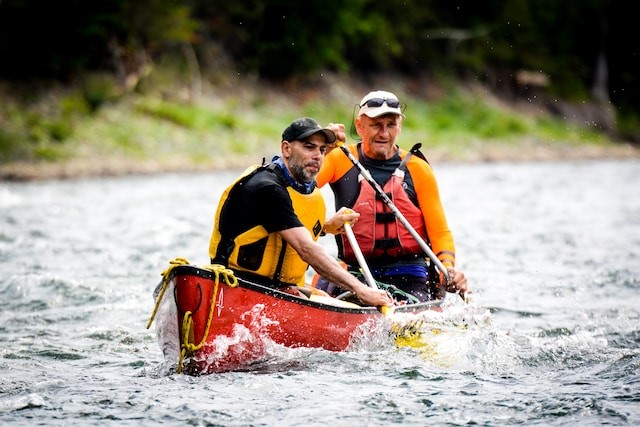The low brace is a fundamental paddling technique in canoeing used to maintain balance and prevent capsizing, especially in moving water or when encountering waves and obstacles. This technique involves using the paddle to provide support and stability by exerting downward pressure on the water. Here's how it works:
Step 1: Initial Position
Begin from a seated position in your canoe with your back straight and knees bent. Hold the paddle with both hands, maintaining a shoulder-width grip on the shaft. Ensure that the paddle blade is oriented horizontally.

Step 2: Assess the Need
Before executing the low brace, assess the situation. This technique is primarily used to maintain balance and stability in situations where your canoe is tilting or at risk of capsizing, such as when navigating through moving water or encountering waves and obstacles.
Step 3: Tilt the Canoe
If your canoe starts to tip to one side, respond by leaning your upper body in the opposite direction. This counterbalances the tipping motion and prepares you for the low brace.
Step 4: Blade Entry
With the canoe tilted and your upper body leaned in the opposite direction, it's time to execute the low brace. Dip the paddle blade into the water on the side of the canoe that's tipping. The key here is to keep the blade as close to the canoe as possible. Angle the paddle blade slightly downward and away from the canoe.
Step 5: Applying Downward Pressure
As the paddle blade enters the water, apply firm downward pressure. This action creates a counteracting force against the tipping of the canoe. The low brace essentially acts as a support or brace against the water's resistance.
Step 6: Maintaining Balance
While exerting downward pressure with the paddle, maintain a low posture with your upper body. Keep your weight centered over the canoe. This is crucial for preventing further tipping and ensuring stability.
Step 7: Recovery
Once balance is restored and the canoe becomes more stable, smoothly lift the paddle blade out of the water. Gradually return to an upright paddling position.
Step 8: Practice and Proficiency
To become proficient in the low brace technique, practice is key. Spend time in controlled conditions, such as calm waters, to familiarize yourself with the technique. Gradually challenge yourself in more dynamic environments to build confidence in using the low brace effectively. The low brace is a valuable skill for canoeists, especially in scenarios where stability is compromised. By mastering this technique through consistent practice and following these detailed steps, you'll enhance your ability to maintain balance, prevent capsizing, and navigate challenging water conditions with confidence.



